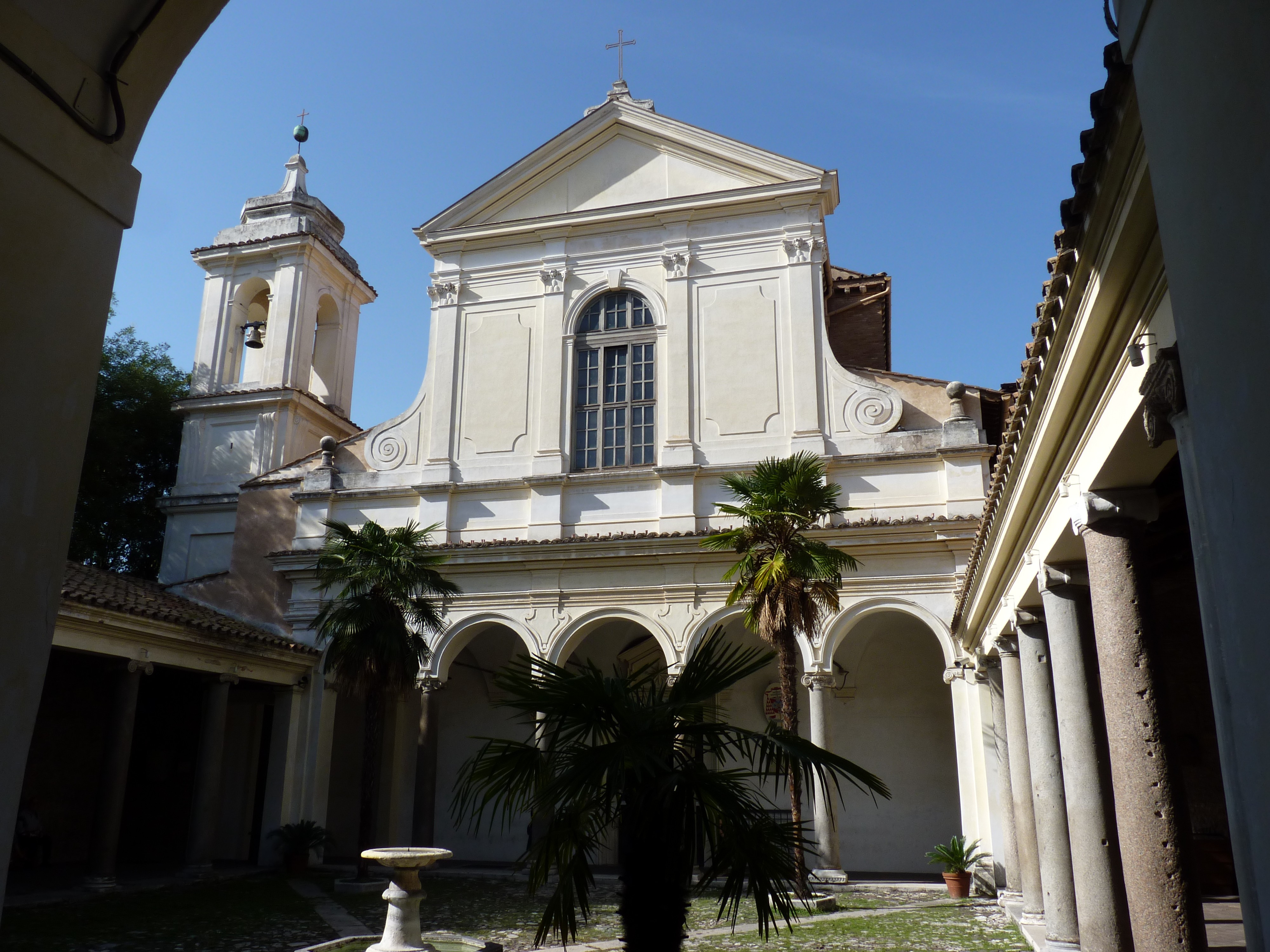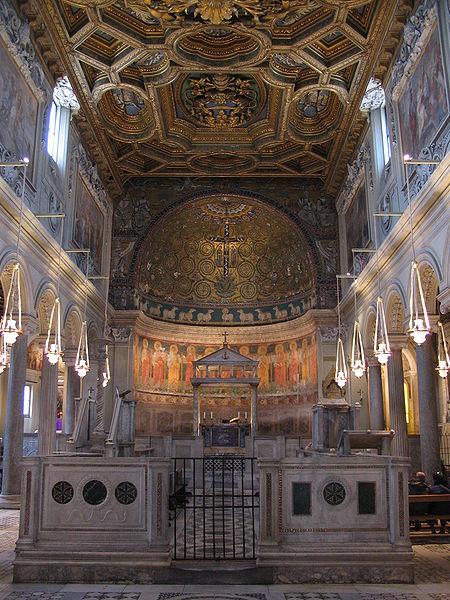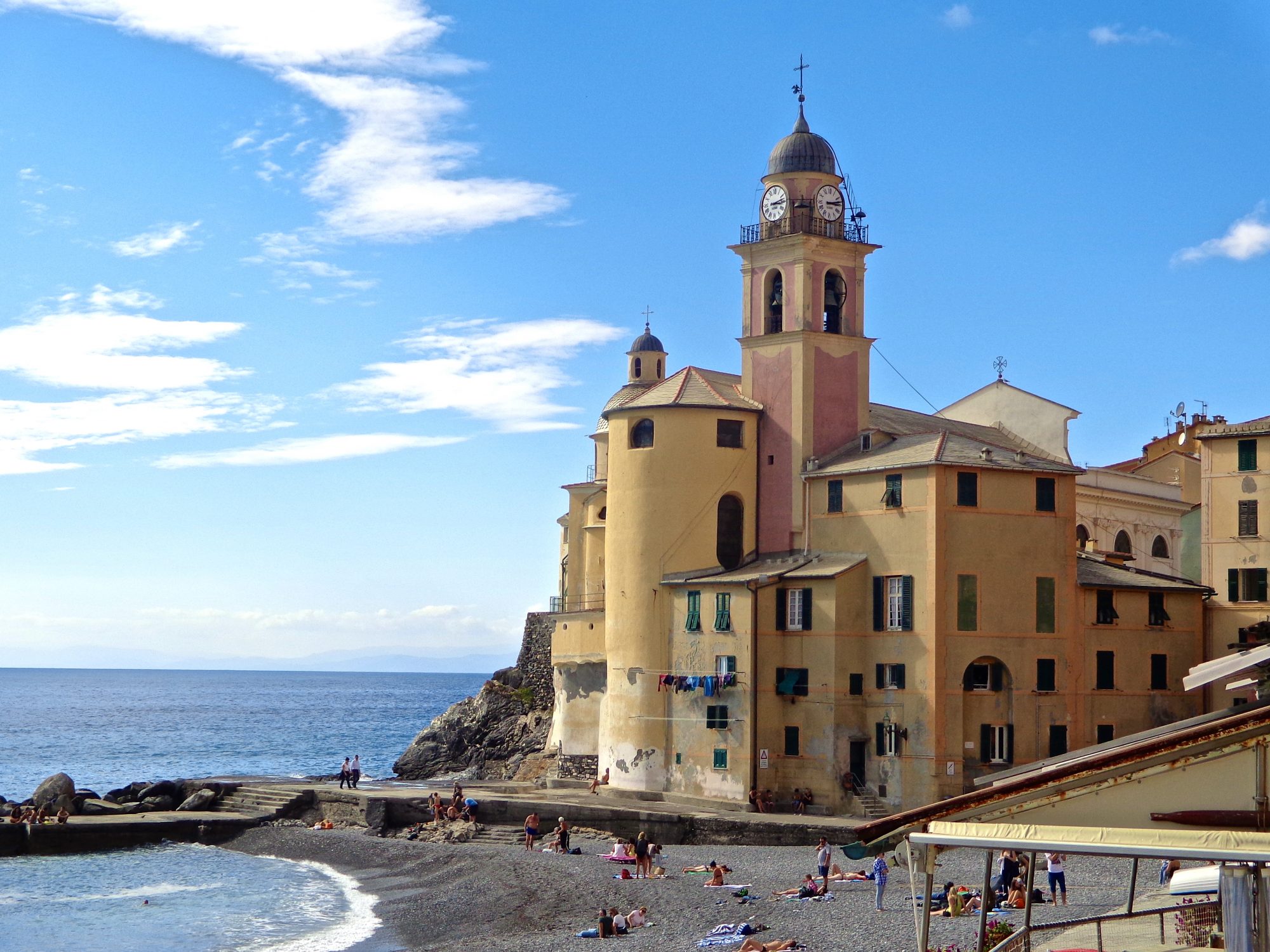I descended 60 feet below Rome’s surface into a mysterious past I knew little about…
The ancient Basilica of San Clemente, named after Rome’s third pope, hardly drew my attention as I passed by on my walk from the Colosseum. I soon discovered that I had approached the basilica from the side by mistake, missing the grand entrance fronted by a small courtyard with palm trees.

I had previously read about the basilica’s three levels of fascinating history, one church on top of another. The present 12th-century basilica was erected on the site of a previous church which had been buried for centuries underneath the level of the city streets.
Inside the basilica, adorned with dazzling mosaics, I noticed the golden apse depicting Christ on the Cross surrounded by doves. I walked across the uneven tile floor as it dipped and swayed through the centuries of visiting pilgrims and worshipers. A faint smell of incense, mingled with a cool earthiness, grew stronger as I began my journey from the sacristy down a flight of stairs and into the depths of the 4th century Church of San Clemente.

The existing 4th century basilica served as the foundation for the newer church. The builders simulated the earlier church in nearly every way including the nave, aisles, clerestory windows, arcades (arches), the simple apse, and an open wooden roof that is now hidden by a ceiling that has been ornately decorated. The only difference made was a somewhat narrower structure accompanied by piers halfway down the nave.
Today much of the ancient Roman heritage has been obscured by an eighteenth-century renovation. Part of the church was actually the upper room of a second-century Roman mansion directly below it, owned by Titus Flavius Clemens, one of the first Roman senators to convert to Christianity. His house was used for secret Christian worship until Christianity was legalized in 313 AD. under Emperor Constantine. I noticed the similar floor plan of the 12th-century basilica above. Rows of stout columns stood as support among faded frescoes on the old stone walls. Bits of mosaic flooring can still be seen. One of the better-preserved wall frescoes depicts The Legend of St. Alexis, a 3rd century Syrian who denied his wealth to live and care for the poor.

The smell of dank earthiness increased, creating a growing sense of an unfamiliar time. I descended an even older set of steps to the bottom level of the basilica. Here I found the remains of a first century building believed to have belonged to a man by the name of Clement and believed to be a relative of the Consul-Martyr Titus Flavius Clemens, St. Clement’s contemporary. It is believed that a room was set aside here for Christian worship which was likely illeagal at the time.
A second-century temple of the pagan god Mithras inside a cave-like room stood just across the ancient street. The altar depicted a carving of Mithras slaying a bull. Long low stone benches for seating ran along two sides of the room. During the first century, this Persian cult grew in popularity particularly among the Roman soldiers but was eventually eradicated by Roman Christians.
Later excavations found a 4th layer underneath that contain buildings destroyed in the fire of Nero in 64 AD. Interesting to note, after the fire, the buildings were filled in and used as foundations for further houses. The level of the valley in which San Clemente lies was actually about sixty feet lower in the first century than the present level.

I could hear the sound of rushing water close by. Following the remains of a corridor, I passed a room thought to have been used as a Mithras school. At the end, I found a small room with a gurgling spring from some unknown source viewable in the corner that ran under the floor.
As I retraced my steps, I began to pull together all that my senses had collected. Images started to form of another time long ago. Before Christianity was legal. While paganism flourished. Beginning with the reign of unstable emperors. A time when there was no middle class, only slaves, and freedmen. Dangerous times…..
Have you been to San Clemente in Rome? What were your thoughts and impressions? Please leave a comment below. I’d love to read them.
The Basilica of San Clemente is just a 10 minute walk from the Colosseum in Rome. From Piazza del Colosseo, follow Via Labicana to Piazza di San Clemente.
For information on tours click here Basilica San Clemente
*Sources used in this article are listed below:
St. Clement’s Rome, by Leonard Boyle O.P.
Smarthistory.org


The layers of history in cities like Rome are amazing. Great article, Susan 😀
LikeLiked by 1 person
on my to-do list!!!
LikeLiked by 2 people
You will love it, Julie!
LikeLiked by 1 person
Very interesting post.
LikeLiked by 2 people
Thank you!
LikeLike
Thank you, dear Susan, for sharing this ancient place with us–such breathtaking architecture. It’s especially intriguing to be learning history about “The Way”. We have it so easy in N.A. when it comes to freedom of religion etc; we must not take it for granted.
Blessings ~ Wendy
LikeLiked by 1 person
Hi Wendy! You are so welcome…and I sure do feel blessed to have the freedom to worship the Lord openly today. Blessings to you:)
LikeLiked by 1 person
I believe this is the most amazing place I have ever been. Thanks for taking me back there!
LikeLiked by 3 people
My pleasure!
LikeLiked by 1 person
Reblogged this on Stiggerink's Blog and commented:
Old Rome never gets old, does it?
LikeLiked by 2 people
Always something old popping up again…Rome is eternal!
LikeLike
Reblogged this on Make Italy Yours.
LikeLiked by 1 person
Nice to meet you! I share your article on my blog, thank you!
LikeLiked by 2 people
Thank you Stefania:)
LikeLiked by 1 person
A beautiful Basilica
LikeLiked by 1 person
The layers of history under the streets of Roma are fascinating! There is still so much still undiscovered too.
LikeLiked by 1 person
Great post and photos Susan! Love it! 🙂 ❤
LikeLiked by 1 person
Thank you Natalie:)
LikeLiked by 1 person
My pleasure my friend ‼️❌⭕️
LikeLiked by 1 person
Isn’t Rome, and all of Italy, amazing—layers and layers of history—I love it!
thank you for sharing!!!
LikeLiked by 1 person
Those layers of history are so intriguing. Thanks for stopping by Julie
LikeLike
What a great article!
LikeLiked by 2 people
Thank you Gloria:)
LikeLike